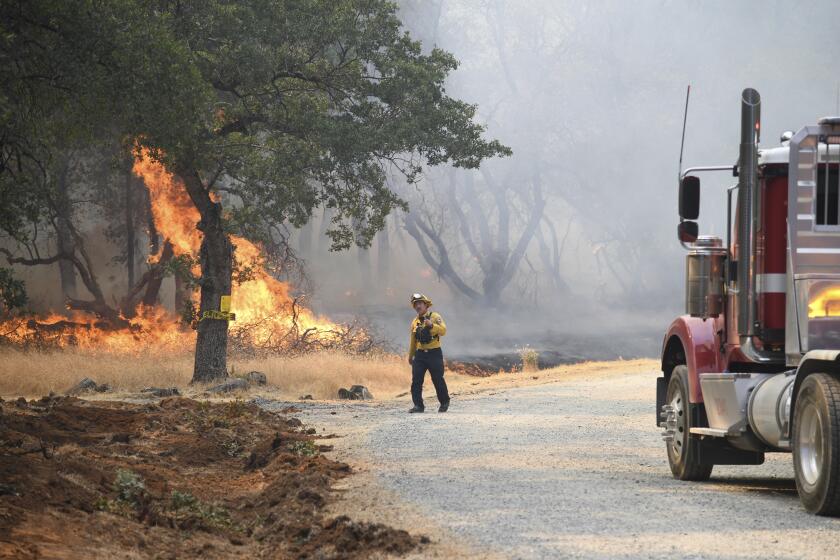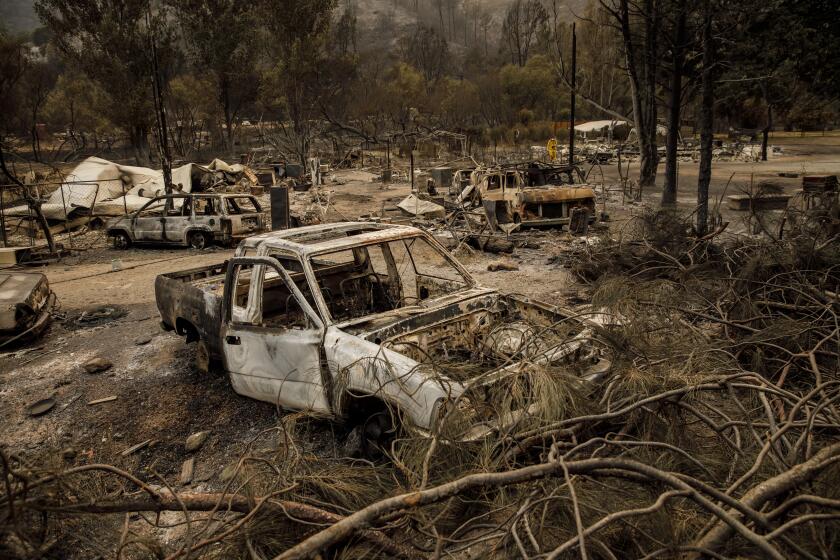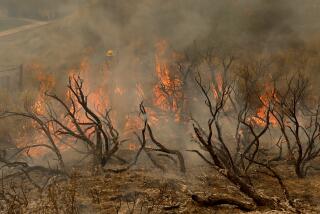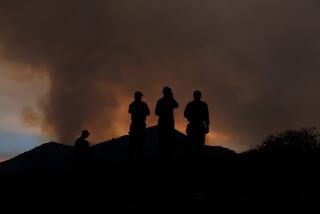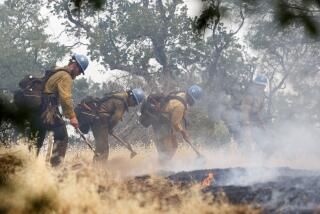13 firefighters injured battling Northern California wildfire; some evacuations lifted
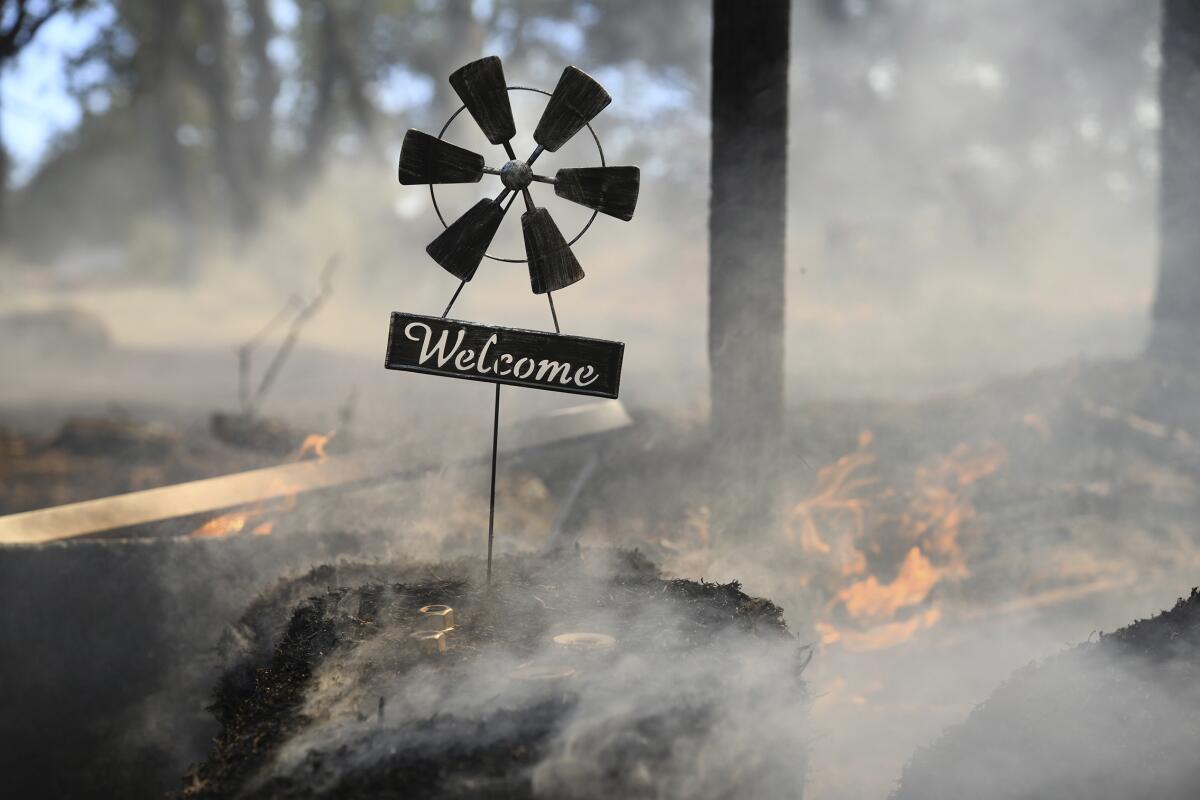
- Share via
Some evacuated residents began to return home as firefighters worked Thursday night to contain a wildfire burning in Northern California’s remote Nevada County.
The Rices fire, burning in rugged terrain, was holding at 904 acres and containment had increased to 20%, said Jim Hudson, deputy chief of the state Department of Forestry and Fire Protection’s Nevada-Yuba-Placer Unit.
Crews noted “very little fire growth” but continued to face challenges on the blaze’s west side, along the Yuba River, Hudson said.
Several hot spots remained, and firefighters were still working to complete containment lines.
Authorities said 13 firefighters have been injured battling the blaze, which sparked Tuesday. The injuries were primarily heat-related as temperatures near the fire soared into the 80s and 90s this week.
One civilian was also injured, officials said. Information on the nature of that injury was not provided.
Evacuation orders in two zones were downgraded to warnings by Thursday night, allowing about 250 residents to return home, said Nevada County Sheriff’s Capt. Sam Brown.
Residents can check evacuations at community.zonehaven.com.
Brown urged residents to be alert.
“The fire is not out,” he said. “Our fire partners are assuring us that they’re monitoring and ensuring that things are going the best that they can, but we can’t control Mother Nature.”
Roadblocks remain in place on Pleasant Valley Road, Brown said. Only residents and first responders will be allowed through.
Drivers should also be aware of posted signs marking areas that are not yet safe to enter, Brown said.
“We want to get people in their homes, but we also want people to be safe, and we can never guarantee that the fire won’t take a turn,” he said.
Crews were contending with dangerously steep terrain and drought-dried brush that can easily act as fuel for flames, said Mary Eldridge, a Cal Fire spokeswoman.
“It’s just incredibly difficult to access, and so they’re talking about doing rope systems to even get down there,” Eldridge said, adding that there are large rock outcroppings “where it can go from a 20- or 30-foot drop to a 150-foot drop, so it’s hard for firefighters to really get in there with any kind of tools.”
Crews saw “moderate relief” Thursday from extreme temperatures, but conditions were still very hot and dry, officials said.
Wind gusts of up to 14 mph “represent a significant potential for fire spread in the next 24 hours,” Cal Fire said Thursday night.
Four structures have been destroyed by the fire and hundreds more are threatened, Eldridge said.
The fire so far is holding at the Yuba River, a border between Nevada and Yuba counties, she said. But it is the biggest fire this year in the five-county area of Nevada, Yuba, Placer, Sutter and Sierra.
“It burned quite quickly due to the amount of fuels that were in that canyon, and it doesn’t have a lot of fire history on it,” Eldridge said. “Between the brush and the heavy timber, there was a lot of fuel to burn, so once it got started — and because of the steepness of the canyon — it was really able to make that first run.”
The Rices fire, which broke out Tuesday in Nevada County, has burned 769 acres, growing by almost 200 acres overnight, and is still 0% contained.
Some of the initial smoke from the fire has dissipated, said Sierra Littlefield, a National Weather Service meteorologist in Sacramento. However, the Northern Sierra Air Quality Management District has issued an air quality health advisory that will remain in effect through Tuesday.
In California, wildfires caused by humans grow faster and become hotter than wildfires sparked by lightning, the studies show.
Residents who smell or see smoke are advised to stay indoors with doors and windows closed as much as possible.
Eldridge, of Cal Fire, said shifting winds could help the blaze burn back onto itself.
“That’s actually a best-case scenario,” she said. “But you just never know, with the wind on it, if it might pop something up.”
Around 1,000 personnel are battling the fire from the air and ground, she said, adding that aerial crews on Wednesday dropped 83,000 gallons of retardant onto the flames.
The big concern now is keeping the structures that overlook the river safe as it creeps to the northwest, she said.
“You can imagine the beautiful views these folks have sitting on the top of the ridge looking down at the river — it’s lovely,” Eldridge said. “It’s just that now it’s covered in smoke.”
More to Read
Sign up for Essential California
The most important California stories and recommendations in your inbox every morning.
You may occasionally receive promotional content from the Los Angeles Times.
